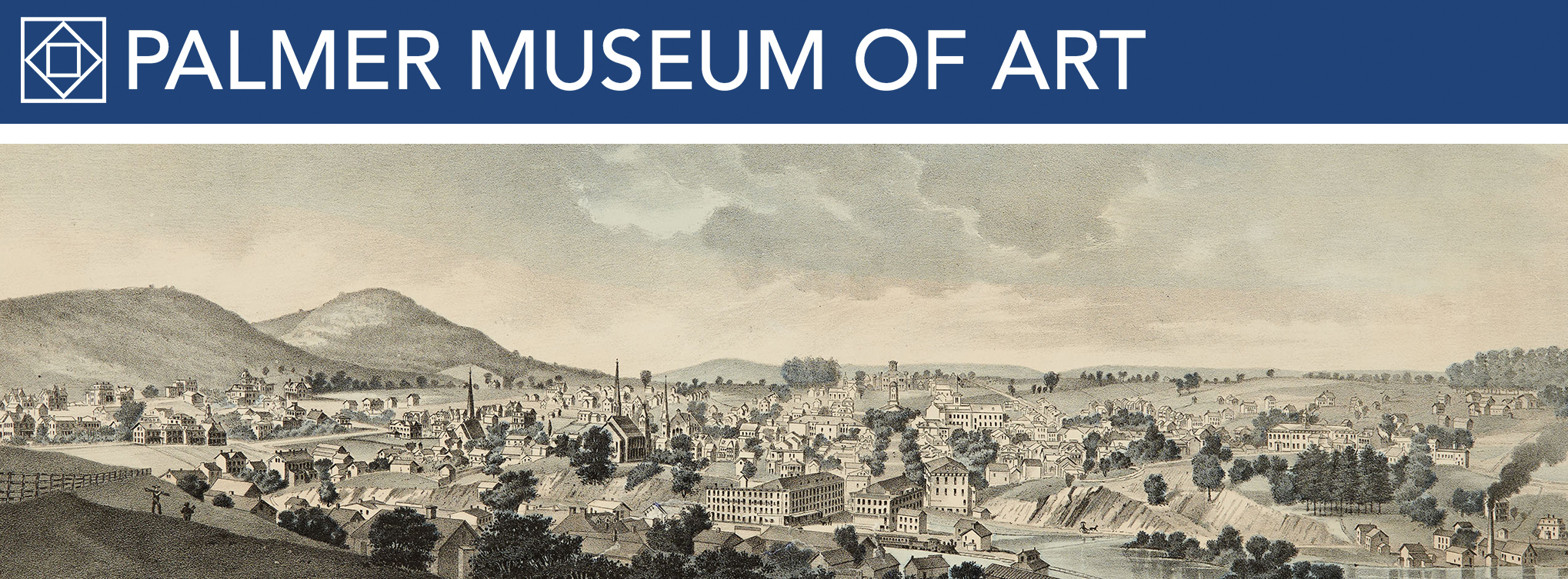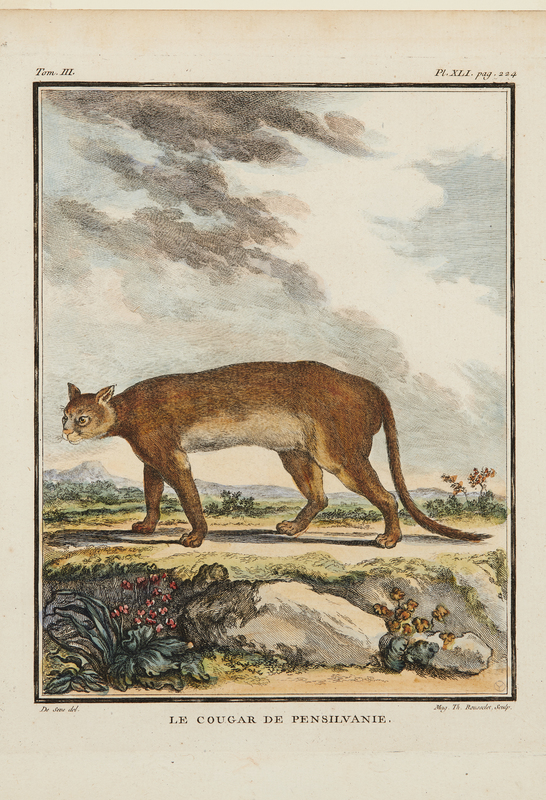Le Cougar de Pensilvanie
Item
Title
Le Cougar de Pensilvanie
Creator
Madeleine-Thérèse Rousselet
French, active c. 1750–1800
After Jacques de Sève
French, active 1742–1788
Plate 41 from George-Louis Leclerc de Buffon, Histoire naturelle, générale et párticulière, supplément, tome III
Published in 1776 by L’Imprimerie royale, Paris
French, active c. 1750–1800
After Jacques de Sève
French, active 1742–1788
Plate 41 from George-Louis Leclerc de Buffon, Histoire naturelle, générale et párticulière, supplément, tome III
Published in 1776 by L’Imprimerie royale, Paris
Materials
Etching with hand coloring
Measurements
9-15/16 x 7-3/4 in. (25.3 x 19.7 cm)
Description
The mountain lion of Pennsylvania, mascot of Penn State since 1908, has many names: puma, deer tiger, panther, cougar, and catamount, among others. The apprehensive creature here, appearing perhaps more suitable as a pet at the French court, bears little resemblance to Audubon’s ferocious predator in his lithograph of Felis concolor, hanging nearby.
John O’Connor and Ralph Yeager reached into the eighteenth century to add an image of the Nittany Lion to their collection. This etching comes from George-Louis Leclerc de Buffon’s massive study of natural history, begun in 1749 and completed, posthumously, in 1789. The sheet illustrates a section in the third supplemental volume on quadrupeds, where Buffon differentiates (as it turns out, correctly) the North American puma, which he calls the Pennsylvania cougar, from the remainder of the species, all located in Central and South America.
Adapted from the entry written by Judith Hansen O’Toole for the 1980 Pennsylvania Prints exhibition catalogue.
John O’Connor and Ralph Yeager reached into the eighteenth century to add an image of the Nittany Lion to their collection. This etching comes from George-Louis Leclerc de Buffon’s massive study of natural history, begun in 1749 and completed, posthumously, in 1789. The sheet illustrates a section in the third supplemental volume on quadrupeds, where Buffon differentiates (as it turns out, correctly) the North American puma, which he calls the Pennsylvania cougar, from the remainder of the species, all located in Central and South America.
Adapted from the entry written by Judith Hansen O’Toole for the 1980 Pennsylvania Prints exhibition catalogue.
Source
Palmer Museum of Art, The Pennsylvania State University, partial gift and purchase from John C. O’Connor and Ralph M. Yeager.
Identifier
86.707
Rights
This image is posted publicly for non-profit educational uses, excluding printed publication. Other uses are not permitted.

